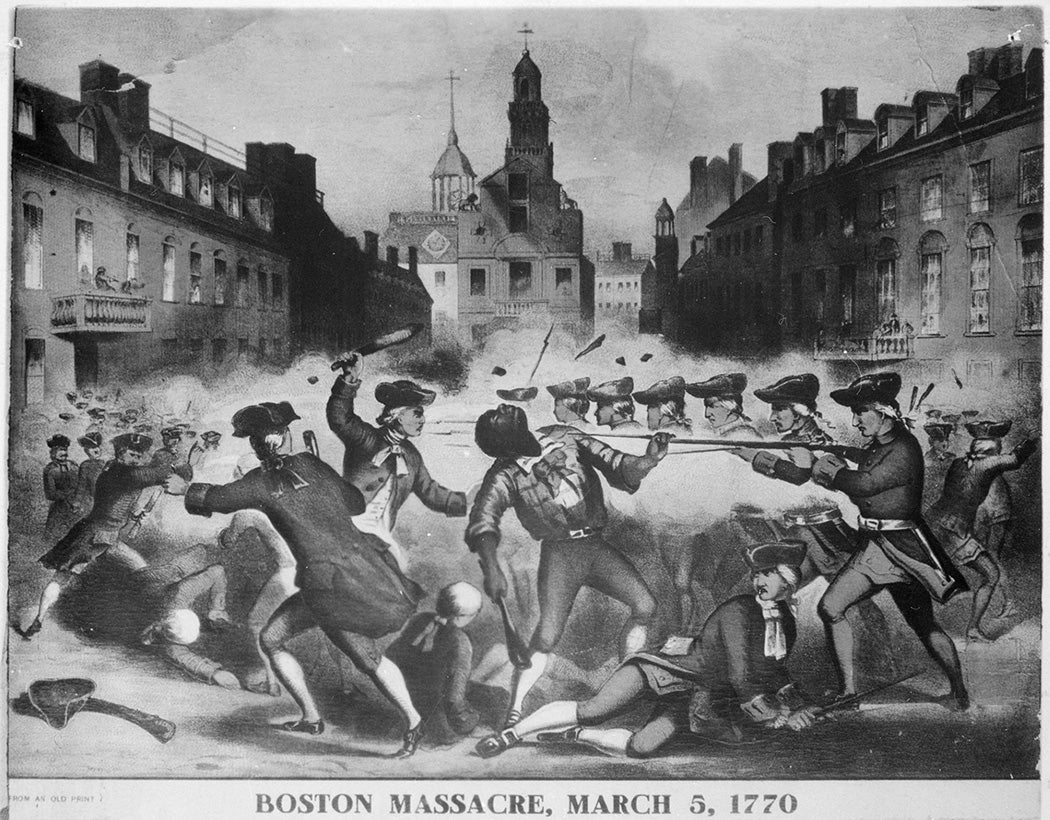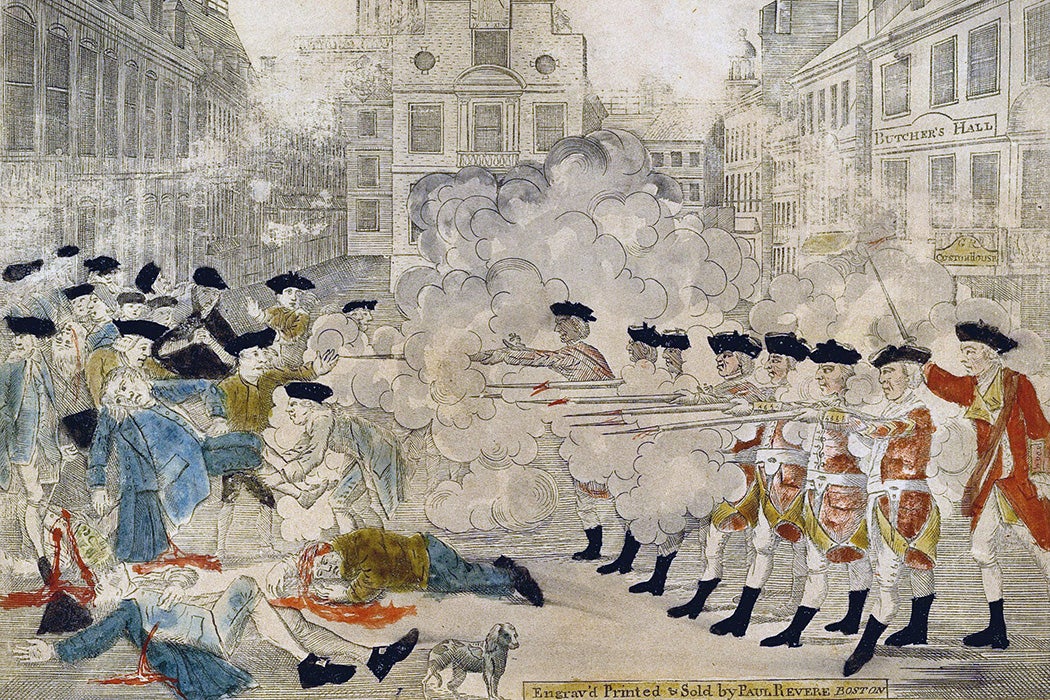In a melee on March 5, 1770, later called the Boston Massacre, British soldiers killed five Patriots. One was a man named Crispus Attucks, whom many consider the first casualty of the American Revolution. It’s now believed that Attucks was of African and Native American ancestry, and probably freed himself from slavery in Framingham, Massachusetts, around 1750. In the years after his self-emancipation, Attucks worked on the docks and whaling ships.
The future president John Adams, in defending the Redcoats in court, called the Bostonians involved “a motley rabble of saucy boys, negros and molattoes, Irish teagues and outlandish Jack Tars.” Attucks was the ringleader of the mob, Adams said; the dockworker apparently fit several of those disparaging categories.
Weekly Newsletter
American studies scholar Karsten Fitz traces Attucks’s posthumous career in images of the Boston Massacre. None other than Paul Revere engraved the first widely circulated picture of the event, The Bloody Massacre, perpetrated in King-Street, Boston, on March 5th, 1770, published three weeks after the skirmish (featured image, above). Fitz calls this famous image “one of the most striking distortions in the record of the visual narratives of the American Revolution.”
Revere’s engraving should not be taken so much as historical record as propaganda for the Patriot cause, writes Fitz: Revere portrays Redcoats firing on gentlemen Patriots at point-blank range. (In reality, the Bostonians were armed, albeit with sticks, rocks, and snowballs, and by all accounts were moving aggressively toward the soldiers.) Depending on the version of the print, a head in the lower left may be Crispus Attucks. But in many existing copies, this figure isn’t portrayed as African American. Nonetheless, this is the image that has “become part of the storehouse of American cultural memory.”
Subsequent “visual narratives” also erased the participation of African Americans like Attucks from the Revolution. Fitz suggests that white Americans preferred images like this, so as not to connect “their national formative events . . . with the system of slavery[.]” A whitewashed Boston Massacre would “hide” slavery “from their commemoration of the founding of the nation.”

Fitz argues that this iconic “mother image” was the beginning of a process: “the erasure, the marginalization, and the re-emergence of the black presence” in representations of the Revolution. Indeed, it took eighty-five years for Attucks to be portrayed as the leader of the Bostonians, as Adams said he was. Perhaps unsurprisingly, a black abolitionist was the first to do it: in 1855, William C. Nell presented “Crispus Attucks, the First Martyr of the American Revolution” in his The Coloured Patriots of the American Revolution (fig. 1). Nell places the dying Attucks front and center, being held in the arms of a white compatriot in the manner of popular “dying general” paintings of the day.

William L. Champney (“of whom next to nothing is known,” according to Fitz) also centered Attucks in his 1856 print “Boston Massacre” (fig. 2). But neither Nell’s nor Champney’s works had anywhere near the distribution of Alonzo Chappel’s “Boston Massacre” (1857, fig. 3), which reverted back to the Revere style: there is a black man in the crowd, but he’s obscured, not the leader, nor the first martyr.

“American art in the middle decades of the nineteenth century was consciously designed to influence and elevate the national character,” writes Fitz. Images of the massacre in the 1850s were conflicted about Attucks, who became a symbol for the abolitionist movement. There was, after all, no better representative of freedom than a former slave who died for the cause.
Support JSTOR Daily! Join our new membership program on Patreon today.







